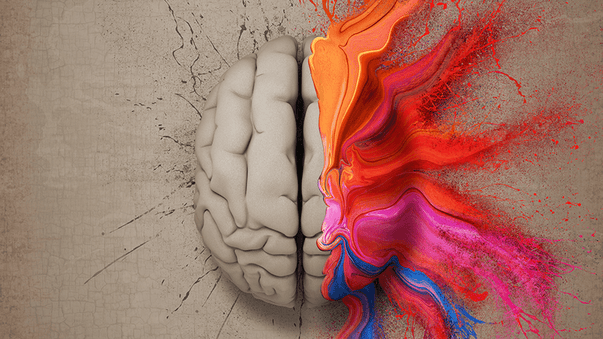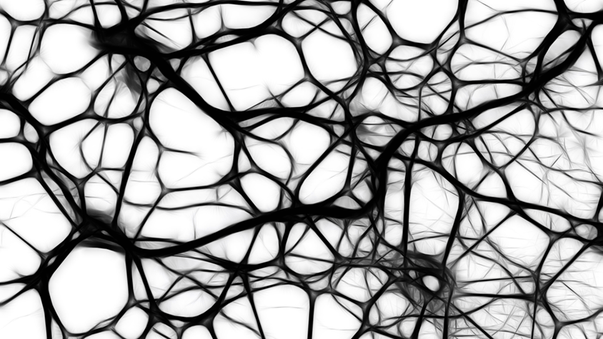Watching Neural Activity Unfold in the Brain

“Now we can record the neural activity of many cells in a neural circuit and hear them as they talk to each other,” said Edward Boyden, an associate professor of biological engineering and brain and cognitive sciences at MIT, commenting on recent brain mapping research at MIT (see below). “We will be able to watch a neural computation happen. Over the next five years or so we’re going to try to solve some small brain circuits completely. Such results might take a step toward understanding what a thought or a feeling actually is.”
It seems likely that more accurate brain mapping could open the doors to science-fictional applications to not only understanding how the brain works, but also interfacing the brain with computers, as envisioned by Elon Musk’s Neuralink.
BBC News has an interesting story on body-hacking: DIY applications of advanced engineering and biotech for human enhancement. Today’s biohackers are going beyond implanting sensors in their fingers and similar things, and starting with biotech. A few months ago, a biohacker with a doctorate in biochemistry and molecular biophysics injected DNA modified with CRISPR into himself.
“For some, transhumanism - the theory that the human race can evolve beyond its physical and mental limitations with the help of technology - is a crucial part of the advancement of society,” notes the BBC News story. Of course, others have strong negative positions.
We often report on findings that indicate unexpected anti-cancer effects of natural substances. This week, it’s the turn of daffodils: Belgian scientists have discovered that a natural alkaloid extracted from daffodils triggers the activation of an anti-tumoral surveillance pathway.
Light-sensitive protein permits monitoring electrical communications in the brain. Researchers at MIT have developed a new way to measure electrical activity in the brain and study electrical communications between neurons, without electrodes. A study published in Nature Chemical Biology describes how a new light-sensitive protein can be embedded into neuron membranes, where it emits a fluorescent signal that indicates how much voltage a particular cell is experiencing. This could allow scientists to study how neurons behave, millisecond by millisecond, as the brain performs a particular function.
Reconstructing what we see with EEG data and machine learning. Scientists at the University of Toronto have developed a technique that permits reconstructing images of what people see, based on their brain activity gathered by EEG. A research paper, published in eNeuro, describes a study in which test subjects hooked up to EEG equipment were shown images of faces. Their brain activity was recorded and then used to digitally recreate the image in the subject’s mind using a technique based on machine learning algorithms. While other techniques, such as functional magnetic resonance imaging (fMRI), allow to reconstruct images based on visual stimuli using neuroimaging techniques, EEG is simpler, cheaper, and has greater temporal resolution.
Smart glue protein could shed light on key molecular processes in leukemia and ALS disease. Researchers at St. Jude Children's Research Hospital have discovered that self-interaction processes of the protein nucleophosmin, a kind of “smart glue” that guides the construction of ribosomes - the biological machines that assemble proteins using their RNA genetic code - modulate multiple cellular mechanisms in ways that could have clinical applications. The scientists are persuaded that the research results, published in Nature Communications, could lead to understanding the molecular basis of acute myeloid leukemia and amyotrophic lateral sclerosis (ALS), or Lou Gehrig’s disease.
Human neural stem cells heal monkeys with spinal cord injuries. Researchers at UC San Diego have successfully grafted human neural progenitor cells into rhesus monkeys with spinal cord injuries. The grafts not only survived, but grew hundreds of thousands of human axons and synapses, resulting in improved forelimb function in the monkeys. A research paper published in Nature Medicine describes how the scientists used human spinal cord-derived neural progenitor cells (NPCs), stem cells destined to become nerve cells in the central nervous system (CNS), in rhesus monkeys, whose biology and physiology is similar to humans.
Quantum computing for advanced research in biosciences. Scientists at the University of Southern California have demonstrated that a quantum computer can be used as a predictive tool to assess a fundamental process in biology: the binding of gene regulatory proteins to the genome. The research was conducted on a D-Wave Two X machine at the USC Information Sciences Institute. The study, published in Quantum Information, is one of the first documented examples in which a physical quantum processor has been applied to real biological data.
More Articles
Don't miss a beat! In our Pulse Newsletter, Thrivous curates the most important news on health science and human enhancement, so you can stay informed without wasting time on hype and trivia. It's part of the free Thrivous newsletter. Subscribe now to receive email about human enhancement, nootropics, and geroprotectors, as well as company news and deals.
Read more articles at Thrivous, the human enhancement company. You can browse recent articles in Thrivous Views. See other Pulse Newsletter articles. Or check out an article below.
-
Brain Preservation Breakthrough
The announcement from the Brain Preservation Foundation (BPF) that the Large Mammal Brain Preservation Prize has been won (see below) ...
-
Do Our Brains Use AI Deep Learning Algorithms?
Researchers at the Canadian Institute for Advanced Research (CIFAR), working in collaboration with Google Artificial Intelligence (AI) researchers, have unveiled ...


